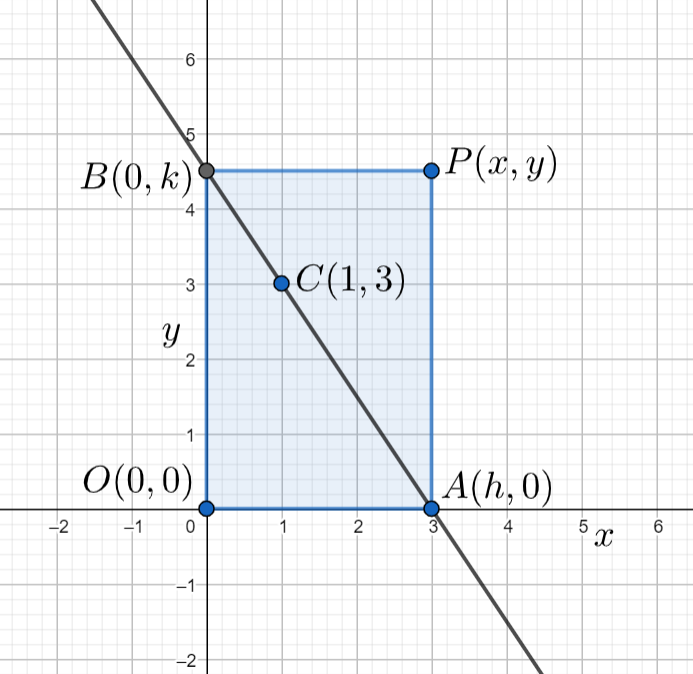Question
Question: The variable line drawn through the point \(\left( 1,3 \right)\) meets the \(x-axis\) at \(A\) and \...
The variable line drawn through the point (1,3) meets the x−axis at A and y−axis at B. If the rectangle OAPB is completed. Where O is the origin, then locus of P is?
A. y1+x3=1.
B. x+3y=1
C. x1+y3=1
D. 3x+y=1
Solution
In this problem we need to find the locus of the point P according to the given conditions. Given that the line passes through the point (1,3) which is assumed to be C meets the x−axis at A and y−axis at B. So, we will assume the coordinates of the points A and B as (h,0), (0,k) respectively. Now we will calculate the slope of the line BC, AC. Use the geometry rule which is the slope of the lines BC, AC are equal because they both are single lines. Now simplify the equation and replace h, k with x, y respectively to get the required result.
Complete step-by-step answer:
Given data, The variable line drawn through the point (1,3) meets the x−axis at A and y−axis at B and the rectangle OAPB is completed. Where O is the origin. The diagrammatic representation of the above data is given by

Let the coordinates of the points A and B are assumed to be (h,0), (0,k) respectively.
Now the slope of the line BC will be given by
m=x2−x1y2−y1
Substituting the values (x1,y1)=(0,k), (x2,y2)=(1,3) in the above equation, then we will get
m=1−03−k⇒m=13−k
Now the slope of the line AC will be calculated by substituting (x1,y1)=(h,0), (x2,y2)=(1,3) in m=x2−x1y2−y1, then we will get
m=1−h3−0⇒m=1−h3
Now the line BC, AC represents the same line, so the slopes of the two lines should be equal, then we will have
13−k=1−h3
Doing cross multiplication in the above equation, then we will get
(3−k)(1−h)=3
Using distribution law of multiplication in the above equation, then we will have
3−3h−k+hk=3
Cancelling the term 3 which is on both sides of the above equation and divide whole equation with hk, then we will get
hk−3h−k+hk=0
Simplifying the above equation by using mathematical operations, then we will have
hk−3h−hkk+hkhk=0⇒−k3−h1+1=0⇒h1+k3=1
Replace the terms h, k with x, y respectively in the above equation, then we will get
x1+y3=1
So, the correct answer is “Option c”.
Note: We can also use the collinear property form the points A, C, B and simplify the determinant obtained to get the required result. Here we need to solve the determinant h 1 0 03k111=0 which shows that the points are collinear.
